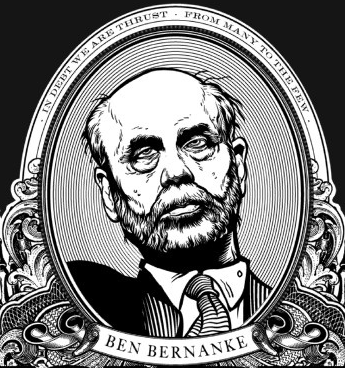
I’m not sure why stocks drew comfort from Ben Bernanke overnight. I’ve attached his testimony to the bottom of this post and there is nothing in it to suggest an imminent shift to QE3. Although Bernanke expressed a clear intention to deliver more stimulus if jobs growth slows, there is not much yet that can be done.
The reason is the 30 year bond yield:

That’s it, sitting at GFC lows. Some of this is the result of the Fed’s Operation Twist buying the long bond. But most is simply safe haven flows as the global economy crumbles. In a sense it is the flip side of Alan Greenspan’s “bond market conundrum” of 2005, when he tried to hike rates but the foreign flows into US bonds decoupled the long bond from the cash rate. For those that don’t know, the thirty year bond is the benchmark for US mortgage rates so the lower it goes the lower mortgage rates go. It is already hyper-stimulatory and so the FOMC has no need for more QE.
This is the driving force behind the US housing recovery, which has to date been more robust than I’d feared. Sure, it remains very subdued by historical standards, a point that Bernanke labours in the testimony. But it is happening. Here is the chart from last night’s Builder Construction Confidence release, from Calculated Risk:

This is going to be a new source of jobs growth in the months ahead.
The choice to engage in more QE at this stage boils down to some pretty simple calculus. A big new round of QE will deliver a big stock market rally and therefore have some positive asset-inflation impacts upon consumption. The same would normally be the case for housing but as described is unnecessary for now. But it will also drive a new round of $US weakness and commodity price strength, especially in oil.
Perhaps that would not be quite so powerful this year as it was in 2011, with the global economy going nowhere. But it is the last thing that emerging markets need, nor in fact, the US consumer.
US inflation was out last night and it is rolling back towards the Fed’s under 2% threshold. From the Cleveland Fed:
According to the Federal Reserve Bank of Cleveland, the median Consumer Price Index rose 0.1% (1.5% annualized rate) in June. The 16% trimmed-mean Consumer Price Index increased 0.2% (1.9% annualized rate) during the month. The median CPI and 16% trimmed-mean CPI are measures of core inflation calculated by the Federal Reserve Bank of Cleveland based on data released in the Bureau of Labor Statistics’ (BLS) monthly CPI report.
Earlier today, the BLS reported that the seasonally adjusted CPI for all urban consumers was virtually flat at 0.0% (0.5% annualized rate) in June. The CPI less food and energy increased 0.2% (2.5% annualized rate) on a seasonally adjusted basis.
Here’s the chart, also from Calculated Risk:

But why push another inflationary pulse into the global economy given the falling prices will be stimulatory for now?
In short, the trade-offs of more QE do not yet add up. The US housing recovery may have to break down first.
d5de4a4e d02c 11e1 891d Ca775b0e903b_Text of Fed Chairman’s Testimony

